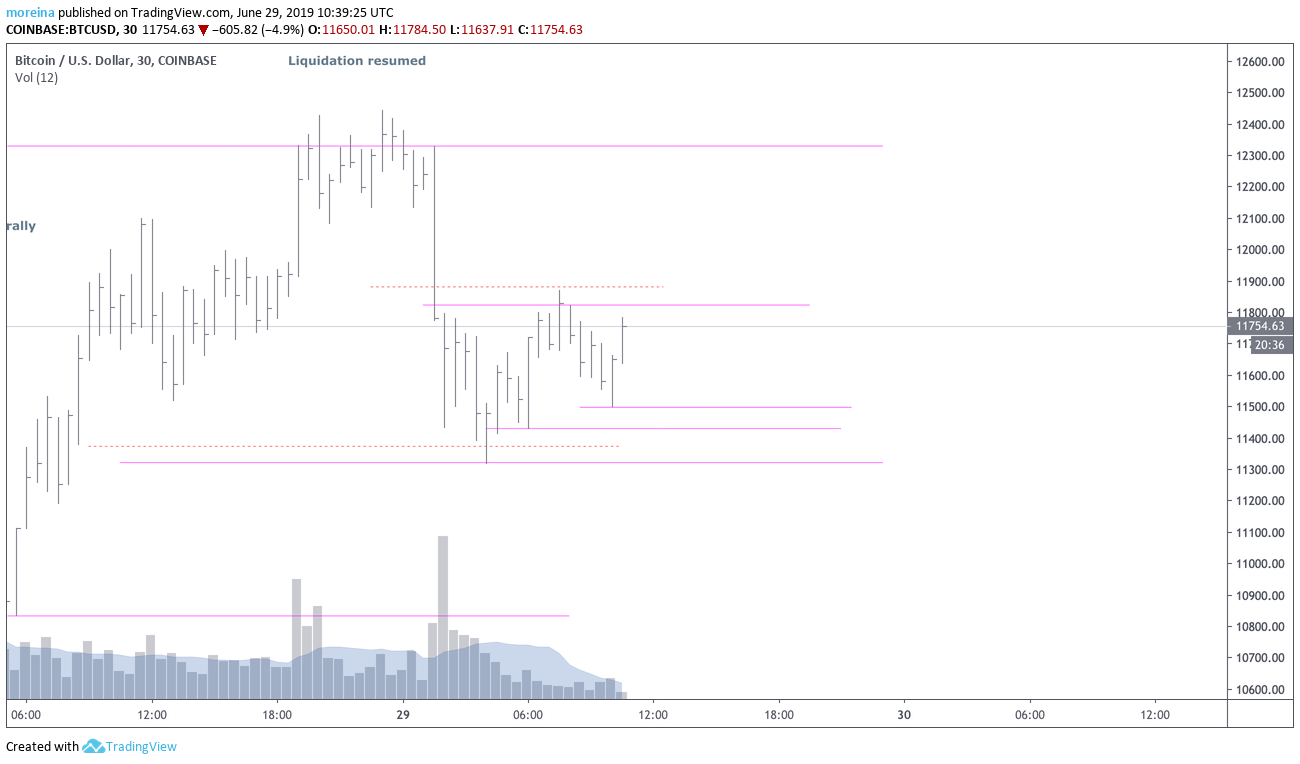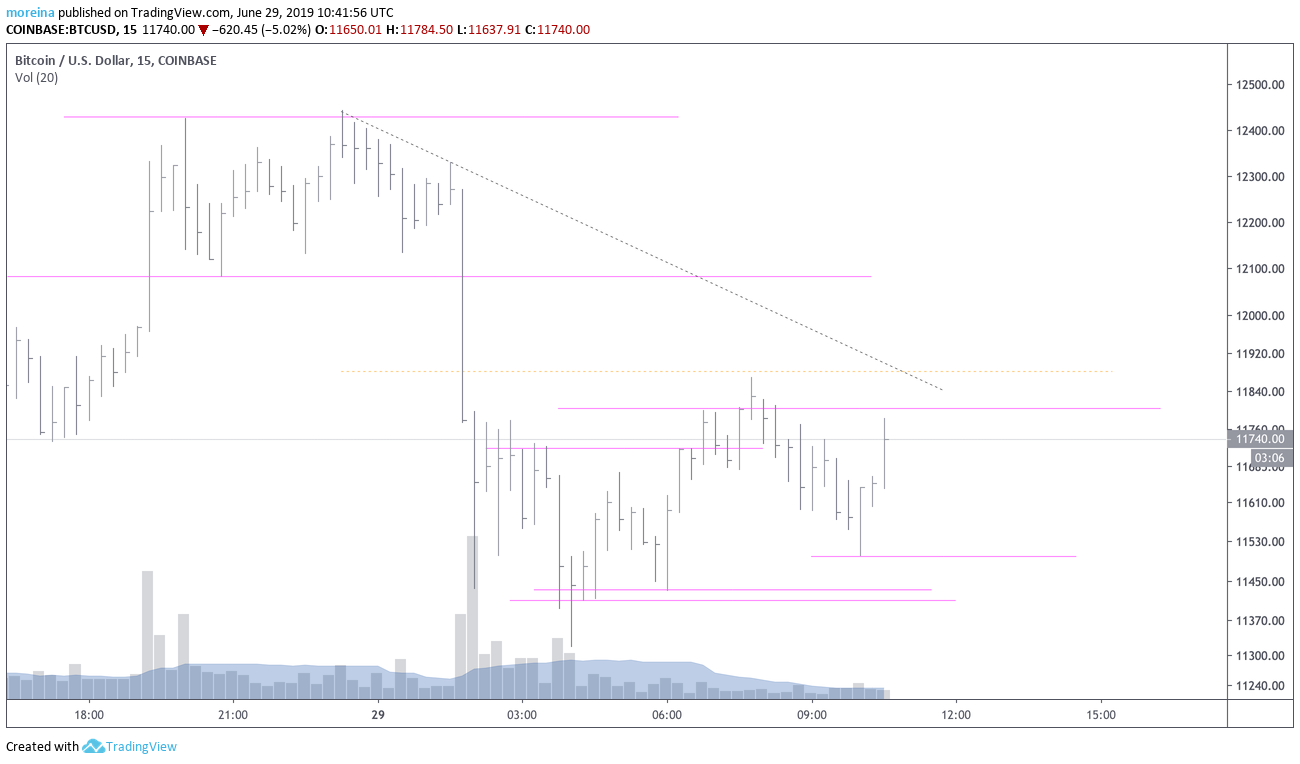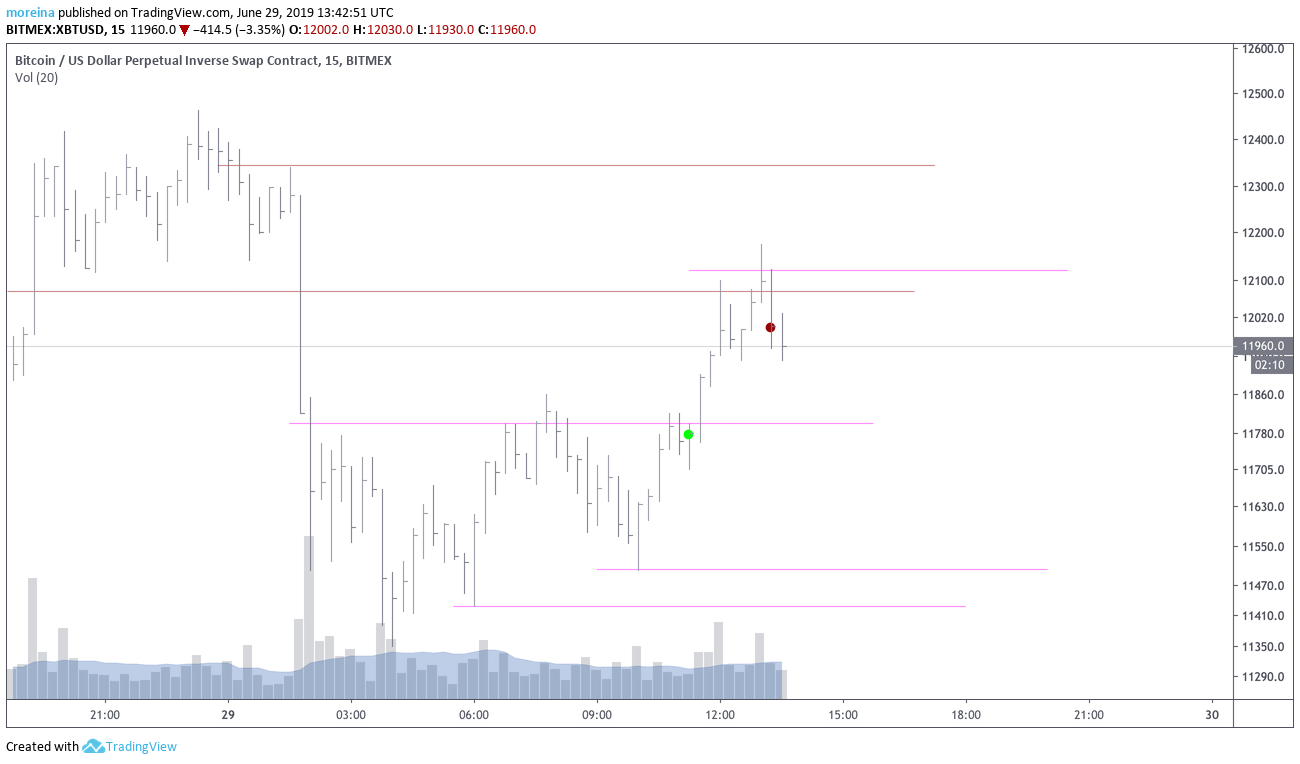• Objectives
Trading part-time, maybe a transition later on if the results are good.
• Markets & Instruments
Focusing on the cryptocurrency called XRP. Tracking the XRP/USD pairing on the bitfinex exchange but doing the actual trade on a local exchange called Coins Pro.
• Style
Position trader, going for the long-term holds. I try to limit my trading to 2 or 3 trades/day.
• Timeframes
Weekly, daily, 30-minute, and 1-3 minutes.
• Reversals, Breakouts or Retracements?
Reversals and retracements due to the low risk involved if the entry is timed right.
• Trade Set Up
If the daily is at a junction point, or possible bounce from a downtrend, determined when today's price rises to yesterday's closing price, I will look at the 30-minute chart.
• Testing
Back-testing and forward testing done though I need to redo testing with more stringent and defined variables, testing each component one by one then together as a whole.
• Entry, Stop Loss & Targets
Targets are defined using P&F vertical count, since it's the one I'm familiar with and has shown to be reliable if the count is not negated. It's also the one that Wyckoff allegedly used so it fits the overall theme.
As a prelude to responding to the questions you asked in your email, I'd like to explore what you've posted above.
• Objectives
Trading part-time, maybe a transition later on if the results are good.
I discourage beginners, or anyone who has a job or some other demanding commitment during market hours, to avoid trading during the day. If you're trading part-time, your focus should be daily and weekly charts, nothing faster. Daily and weekly charts are ideal for part-time traders.
• Markets & Instruments
Focusing on the cryptocurrency called XRP.
Why this as opposed to stocks, commodities, or futures?
• Style
Position trader, going for the long-term holds. I try to limit my trading to 2 or 3 trades/day.
There's an inconsistency here. If you want to be a position trader, you may be looking at 2 or 3 trades a month, not per day. Unless your definition of "long-term" is a few hours. If so, I suggest you give this further consideration.
• Timeframes
Weekly, daily, 30-minute, and 1-3 minutes.
In Wyckoff World, there are no such things as 30m or 1-3m "timeframes". Price movement is continuous. Chopping it up into 1m or 30m or 5m or 17m intervals may serve some purpose, but those intervals exist solely in the minds of the trader and the software engineer; they have nothing to do with the market itself nor with how it moves. I'll grant that "everybody (appears) to do it this way", but this has been the case for only twenty years. In the pre-internet dark days, traders focused on daily, weekly, and monthly charts. If they used charts at all. Or they traded the ticker, which takes us back to intraday trading, which, as I said, is not recommended.
• Reversals, Breakouts or Retracements?
Reversals and retracements due to the low risk involved if the entry is timed right.
FWIW, retracements are easier to enter and manage than reversals, but this is covered at length in my book (the one you have). I suggest you focus on retracements that occur after reversals or wait for the test, which arguably is another form of retracement.
• Trade Set Up
If the daily is at a junction point, or possible bounce from a downtrend, determined when today's price rises to yesterday's closing price, I will look at the 30-minute chart.
See above regarding "30m" charts.
• Testing
Back-testing and forward testing done though I need to redo testing with more stringent and defined variables, testing each component one by one then together as a whole.
You'll find that back-testing and forward-testing is never really done. No matter how robust and solid your trading strategy and tactics, markets change, at least in the details. The past two years, for example, markets have moved according to the contents of Trump's tweets. This has required some modifications in strategy, all of which have to be tested.
• Entry, Stop Loss & Targets
Targets are defined using P&F vertical count, since it's the one I'm familiar with and has shown to be reliable if the count is not negated. It's also the one that Wyckoff allegedly used so it fits the overall theme.
If you're accustomed to P&F and you've had success with it, by all means use it. Consider, however, that in focusing on price movement Wyckoff relied on the dynamics of trader behavior and the auction market (see Section 7 in his course or
my thread on Wyckoff's work).
Db



